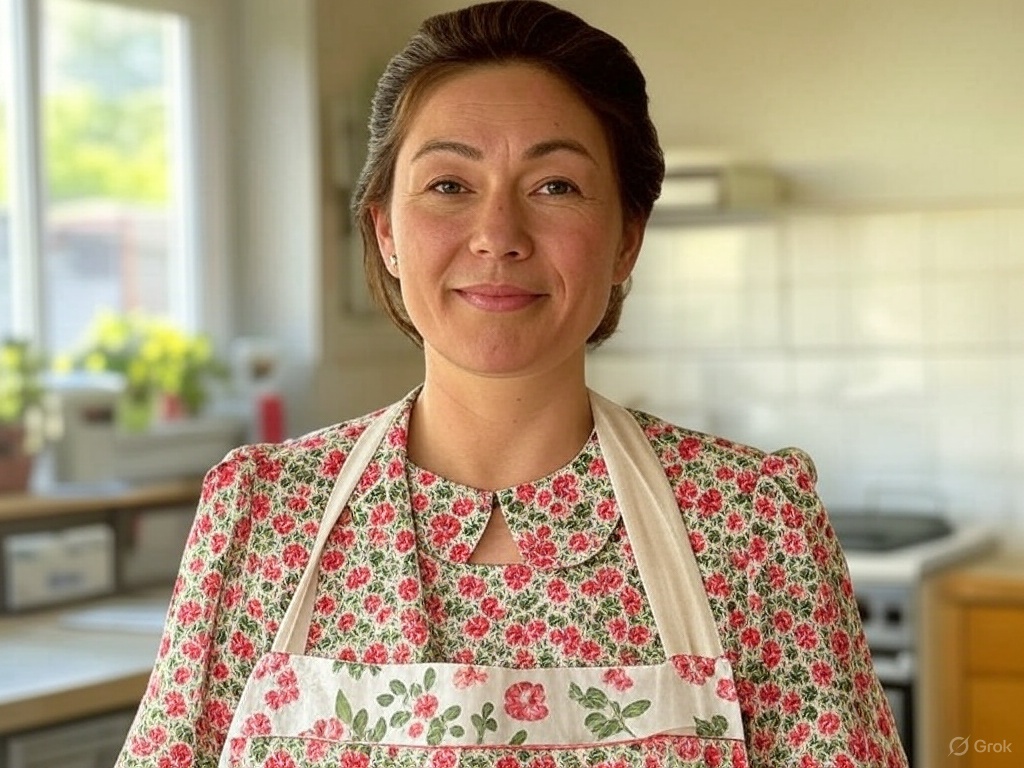In recent years, a fascinating cultural phenomenon has emerged across social media platforms: the rise of “tradwives.” These women—who embrace traditional gender roles and domestic life—have amassed millions of followers while sparking heated debates about feminism, choice, and modern relationships.

What is a “Trad Wife”?
A “tradwife” (short for traditional wife) is a woman who voluntarily chooses to adopt traditional gender roles, typically focusing on:
- Being a homemaker and primary caretaker for children
- Supporting her husband as the breadwinner and head of household
- Embracing domestic skills like cooking, cleaning, and home management
- Often (but not always) following religious values that emphasize traditional family structures
The movement stands in stark contrast to mainstream feminist narratives, with many tradwives explicitly rejecting modern feminism as having devalued homemaking and traditional family structures.
The Digital Explosion of Traditional Domesticity
What makes the tradwife phenomenon particularly interesting is how it has thrived in the digital space. On platforms like TikTok, Instagram, and YouTube, tradwife content creators have built substantial followings by:
- Sharing aesthetically pleasing content showing idyllic domestic scenes
- Posting tutorials on homemaking skills like baking bread, preserving food, and organizing homes
- Discussing the philosophical and sometimes religious underpinnings of their lifestyle choices
- Creating community for women who feel alienated by modern expectations
The hashtag #tradwife has billions of views across social media platforms, with top creators boasting followers in the hundreds of thousands or even millions.
The Appeal in a Modern Context
Why has this seemingly retrograde lifestyle gained such popularity in our progressive era? Experts point to several factors:
The tradwife movement taps into a genuine disillusionment with aspects of modern life—from the exhaustion of the “having it all” mandate placed on women to the economic pressures that make single-income households increasingly difficult to maintain.
For many followers, the aesthetic is as appealing as the ideology. Tradwife content often features carefully curated visuals of rural homes, handmade goods, and flourishing gardens that offer an escape from urban, digital-dominated lifestyles.
Some women see embracing traditional roles as a form of rebellion against current expectations. As one popular tradwife content creator explained: “In a world that expects women to prioritize career ambitions, choosing family first feels revolutionary.“
Criticism and Controversy
The tradwife movement has faced significant criticism, with detractors arguing that it:
- Romanticizes historical periods when women had fewer rights and choices
- May serve as a gateway to more extreme right-wing ideologies
- Often presents a privileged, idealized version of domesticity that ignores economic realities
- Can subtly pressure women to abandon personal ambitions
Feminist critics have been particularly vocal, with many pointing out that the movement often fails to acknowledge that the freedom to choose traditional roles exists precisely because of feminist progress.
Beyond the Binary Debate
The most nuanced takes on the tradwife phenomenon recognize that it defies simple categorization. Many tradwives explicitly state they support women’s right to choose different paths, even as they promote their traditional lifestyle.
Some academics argue that reducing the movement to either “feminist choice” or “patriarchal oppression” misses the complex reality of why women make the lifestyle choices they do.
Dr. Emily Johnson, a sociologist studying gender and social media, notes: “What’s most interesting about the tradwife phenomenon isn’t whether it’s ‘good’ or ‘bad’ for women, but how it reveals the continued tensions in our society about gender, work, family, and fulfillment.“
The Future of Traditional Domesticity Online
As social media platforms evolve and cultural conversations shift, the tradwife movement continues to adapt. Some trends to watch include:
- The rise of “hybrid tradwives” who combine traditional domestic values with modern approaches to gender equality
- Increasing ethnic and cultural diversity within the movement
- Growing emphasis on sustainable living practices like gardening, preserving food, and handcrafting
- New conversations about how traditional skills might offer resilience in uncertain economic times
Whether viewed as a regressive step backward or a legitimate lifestyle choice, one thing is clear: the tradwife phenomenon has tapped into significant cultural currents that extend far beyond social media trends.
For Michelle of the True and Good Blog, the tradwife movement offers fertile ground for exploring our culture’s evolving—and often contradictory—ideas about womanhood, family, and fulfillment in the digital age

